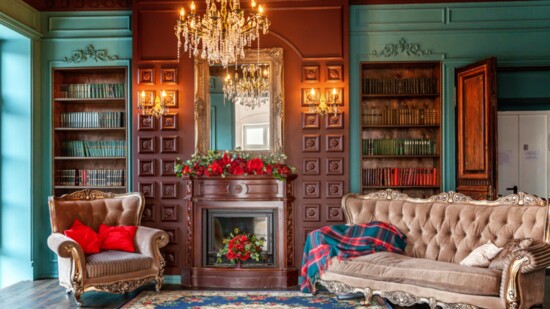In the world of interior design, where trends often come and go, the integration of antiques into contemporary spaces provides a unique opportunity to infuse history, character, and a sense of timelessness. While contemporary design typically embraces sleek lines, minimalism, and the latest innovations, the juxtaposition of antique pieces can create a captivating visual dialogue that elevates the entire ambiance of a room.
One of the most compelling aspects of incorporating antiques into contemporary interiors is their ability to serve as focal points that tell stories of bygone eras. Whether it's a vintage armchair, a centuries-old wooden chest, or a gilded mirror, these pieces bring a depth and richness that modern furnishings often lack. They add a layer of authenticity and craftsmanship that is increasingly rare in mass-produced items of today.
Antiques can also provide a striking contrast to the clean lines and simplicity of contemporary design. A carefully curated antique piece can serve as a statement element, drawing attention and anchoring the space with its history and artisanal details. For instance, a rustic farmhouse table paired with modern acrylic chairs creates an intriguing blend of old and new, bridging the gap between tradition and innovation.
In terms of functionality, antiques are often built to last, crafted from quality materials and designed with enduring practicality in mind. Incorporating these pieces into a contemporary setting not only enhances aesthetic appeal but also brings a sense of sustainability and longevity to the space. It's a departure from the disposable nature of much modern furniture, promoting a more mindful approach to consumption and design.
When integrating antiques into a contemporary interior, balance and harmony are key. Mixing different eras and styles requires a thoughtful approach to ensure cohesion rather than chaos. Consider the scale, color palette, and overall aesthetic of the room to create a cohesive blend that honors both the antique pieces and the contemporary setting.
The personal connection and storytelling aspect of antiques cannot be overlooked. Each piece has a history, a provenance, and perhaps a cultural or familial significance that adds depth and meaning to the space. Whether inherited, discovered in a flea market, or acquired through a reputable antique dealer, these pieces often become cherished focal points that spark conversation and imbue the home with a sense of heritage.
The integration of antiques into contemporary interior design offers a compelling opportunity to create spaces that are both visually captivating and emotionally resonant. By carefully selecting and thoughtfully placing these timeless pieces, homeowners and designers alike can achieve a harmonious balance between the past and the present, resulting in interiors that are as functional as they are aesthetically pleasing.
In a Living Room, imagine a contemporary living room with a neutral color palette of whites and grays. Against one wall, there's a beautifully restored Victorian-era wooden console table with intricate carvings and a furniture, creating a focal point that adds warmth and history to the room.
For a Dining Room: In a sleek, modern dining room with a glass dining table and mid-century inspired chairs, picture a large, ornate antique chandelier hanging above. A baroque-style chandelier, with its intricate metalwork and crystal accents would add drama and a touch of old-world glamour to any contemporary setting, creating a stunning juxtaposition of styles.
Consider the Bedroom and visualize a minimalist room with a platform bed and clean-lined furniture. Positioned near a window is an antique French armoire, its weathered wood and hand-carved details offering a rustic contrast to the room's otherwise modern aesthetic. The armoire serves both as a functional storage piece and a statement of timeless craftsmanship.
In your Home Office: Picture a home office furnished with a sleek, modern desk and ergonomic chair. Adjacent to the desk is a vintage banker's lamp with a brass base and green glass shade, evoking a sense of nostalgia and classic design. This antique lamp not only provides task lighting but also adds character and a hint of history to the contemporary workspace.
Also in a Kitchen with clean lines and stainless steel appliances, envision a rustic farmhouse dining table surrounded by a mix of modern chairs. Above the table hangs a collection of vintage porcelain plates displayed on an industrial-style shelving unit. These antique plates bring color, texture, and a sense of tradition to the otherwise minimalist kitchen design.
These examples illustrate how antiques can be seamlessly integrated into contemporary interiors, creating spaces that are visually dynamic, rich in history, and reflective of personal style. Each piece tells a story and contributes to a layered, curated aesthetic that celebrates both past and present design influences.
"The personal connection and storytelling aspect of antiques cannot be overlooked."
